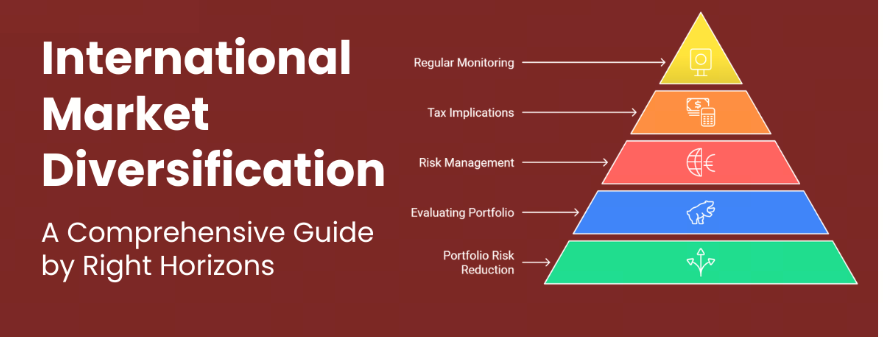
Why Global Diversification Matters
Global diversification means spreading your investments across different geographic regions, sectors, and currencies. This strategy can help protect your portfolio from domestic downturns.
Key Benefits of Global Diversification:
- Reduced portfolio volatility
- Access to emerging market growth
- Hedge against U.S. dollar depreciation
- Exposure to different economic cycles
When one region underperforms, another may thrive—balancing overall returns.
Asset Classes for Global Exposure
To diversify globally, consider investing across multiple asset classes:
1. International Equities
- Includes developed markets (e.g., Europe, Japan) and emerging markets (e.g., India, Brazil).
- Offers exposure to new industries and consumer markets.
2. Foreign Bonds
- Government and corporate bonds from outside the U.S.
- Adds interest rate and currency diversification.
3. Global REITs (Real Estate Investment Trusts)
- Provides access to real estate opportunities in Asia, Europe, and beyond.
4. Commodities
- Natural resources often perform inversely to equities and can benefit from global demand.
Chart: Risk-Return Comparison (U.S. vs. International Assets)
| Asset Class | 10-Year Return (%) | Volatility (%) | Sharpe Ratio |
|---|---|---|---|
| U.S. Large Cap Stocks | 11.8 | 15.2 | 0.76 |
| Developed Market Stocks | 6.2 | 17.0 | 0.36 |
| Emerging Market Stocks | 4.8 | 22.1 | 0.22 |
| Foreign Bonds | 3.1 | 5.5 | 0.40 |
Source: Morningstar, 2025. Past performance does not guarantee future results.
Tips for Effective Global Diversification
1. Start with a Global ETF or Mutual Fund
Low-cost ETFs such as Vanguard Total International Stock ETF (VXUS) or iShares MSCI Emerging Markets ETF (EEM) offer broad international exposure with minimal effort.
These funds automatically allocate across countries and sectors, reducing the need for manual stock picking.
2. Balance Developed and Emerging Markets
Developed markets provide stability, while emerging markets offer higher growth potential. Aim for a 70/30 split as a starting point and adjust based on your risk tolerance.
3. Watch Currency Risks
Foreign investments are influenced by currency exchange rates. Consider hedged ETFs if you're risk-averse, or embrace currency fluctuations if you're seeking long-term growth.
4. Rebalance Regularly
Global markets don’t move in sync. Set a semi-annual review schedule to rebalance your holdings and ensure your asset allocation remains aligned with your goals.
5. Understand Local Market Trends
Different regions react to different triggers—like geopolitical events, inflation trends, or local monetary policy. Stay informed or rely on global fund managers who specialize in these markets.
Common Mistakes to Avoid
- Overconcentration in one region, such as Europe or Asia.
- Ignoring tax implications of international investing.
- Forgetting about political and currency risks in emerging markets.
- Chasing past performance without assessing future potential.
Avoid these errors to keep your global investment strategy strong and adaptive.
Chart: Geographic Allocation Suggestion (Sample Portfolio)
| Region | Suggested Allocation (%) |
|---|---|
| U.S. | 50 |
| Europe | 15 |
| Asia-Pacific | 10 |
| Emerging Markets | 15 |
| Global Bonds | 10 |
This is a sample model portfolio and should be tailored to your individual risk profile.
Final Thoughts: Building a Resilient Portfolio
With the global economy more connected than ever, global diversification is not just a strategy—it's a necessity. By including international stocks, bonds, and real estate in your portfolio, you reduce reliance on any single market and increase the chances of sustainable long-term returns.
Whether you're a seasoned investor or just starting out, following these global diversification tips can put you on a stronger path toward financial security in 2025 and beyond.



